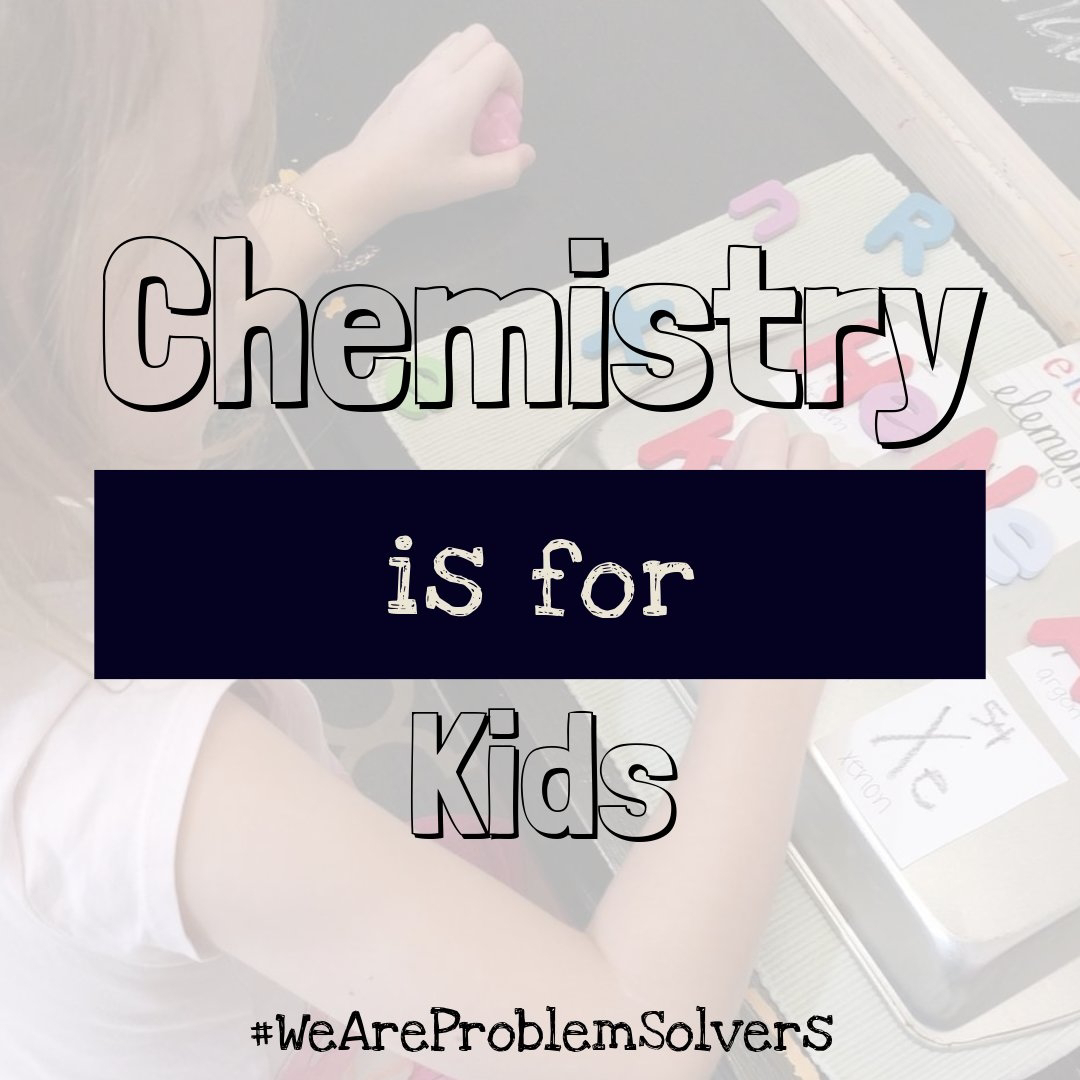Chemistry is for Kids: Building with Elements
Chemistry is so fun to learn. Even young kids can enjoy chemistry!
As soon as a child can recognize the difference between letters and knows how to count, they can start to play around with the building blocks of life.
Chemistry is for kids. #WeAreProblemSolvers
In this blog entry, I share with you how I taught my kids about chemistry.
For kids who love letters, here's a simple way to begin:
I broke the periodic table down into element squares. Each square of paper looks like a square on the periodic table. Here's a child matching magnetic letters to our element squares.
Putting the magnetic letters away in our tackle box at the end of the lesson was great practice remembering alphabet. We sang our ABCs as we foud the box where they go.
Introducing the Periodic Table
Once they became comfortable with a few of the element squares, I brought out the periodic table. Wow, that's a lot of elements, isn't it? How do we learn our way around all these building blocks?
Elemental Bingo!
Once we learned that the elements are all there on the table somewhere, that's when the fun began. We played bingo over breakfast! Here's what our table looked like:
One of us held the element squares and read off their name while the other hunted for each one on the table and placed a piece of cereal to match. When we filled a column (group), or row (period) we won! We took turns with each role so it didn't get old, and everyone had a chance to win!
That was fun, but what do those colors mean on our cards? That's when we start talking about Groups of elements (more on that later).
Atomic Number
But what do those little numbers mean at the top of the element cards? It's their atomic number!
I introduced the meaning behind the atomic number and the atomic mass by building our own atoms with beads. Here's Hydrogen.
We made a little saying to remind us where protons, neutrons, and electrons fit in within the Bohr model of the atom.
"Protons and neutrons cuddle in the middle. Electrons circle all around."
Here's what Nitrogen looks like. Notice that I added a little element square at the top corner of each page with the atomic number and atomic mass.
Here's what the table setup could look like for a lesson with atoms. Work together to tackle all 3 of these elements, one at a time. Hydrogen, Nitrogen, and Carbon.
Storytelling with Molecules
We love building Lewis Dot Structures to talk about molecules. Here's a molecule of H2.
Here's our daughter telling a story while building a molecule.
Chemistry Crafting
Here's a craft we did when introducing Lewis dot structures.
Here's our table where we built our own water. We used popsicle sticks and toilet paper tubes.
Here's a couple of Nitrogen atoms coming together, with the help of our breakfast cereal.
From Atom to Molecule
Here's a lesson where we looked at the reactivity of Nitrogen.
We built a Bohr model of a Nitrogen atom. We used the Valence electrons from the Bohr model to build Lewis dot structures of molecules, including two that contain Nitrogen. By moving around beads we were able to relate these concepts in a highly tactile and visual way.
Balancing Chemical Reactions
But what about balancing Chemical reactions? Can young kids learn that, too? Yes - if you break the concepts down simply enough and present it in a developmentally appropriate way.
Before you begin, a child must...
Have a good sense of numbers up to 10.
Be able to differentiate between different letters of the alphabet. Have a basic understanding of addition.
This lesson had two stations. The first (right) involved building molecular models with beads, then we (left) balanced equations.
In progress, balancing our equation. We tackle it one side at a time. We write out each element and count how many of each element show up on each side of the arrow. Then we check to see if they match. If they don't, we need to figure out how many more we need of each! With this equation, it didn't take much to balance it out. We just needed two of that first molecule.
Would you like some practice? Here are some videos where we balance some simple reactions.
Bringing it all together
Here is a review lesson, where we saw the element Nitrogen from element to atom to molecule, including a reaction. Here's how our lesson setup looked.
We made labels for element, atom, atomic number, molecule, and reaction. Then we matched them with their part of the lesson. We completed the Lewis Dot Structure using electrons from the outer shell of our Nitrogen atom. Then we balanced the reaction on our white board.
Notable Chemists
Did you know that in 2020, the Nobel Prize for Chemistry was awarded jointly to two women? Learn more from the Nobel Prize's website:
#WeAreProblemSolvers










 Then we decided to add a little color to our molecule building. We wrote our letters in color.
Then we decided to add a little color to our molecule building. We wrote our letters in color.







Comments
Post a Comment